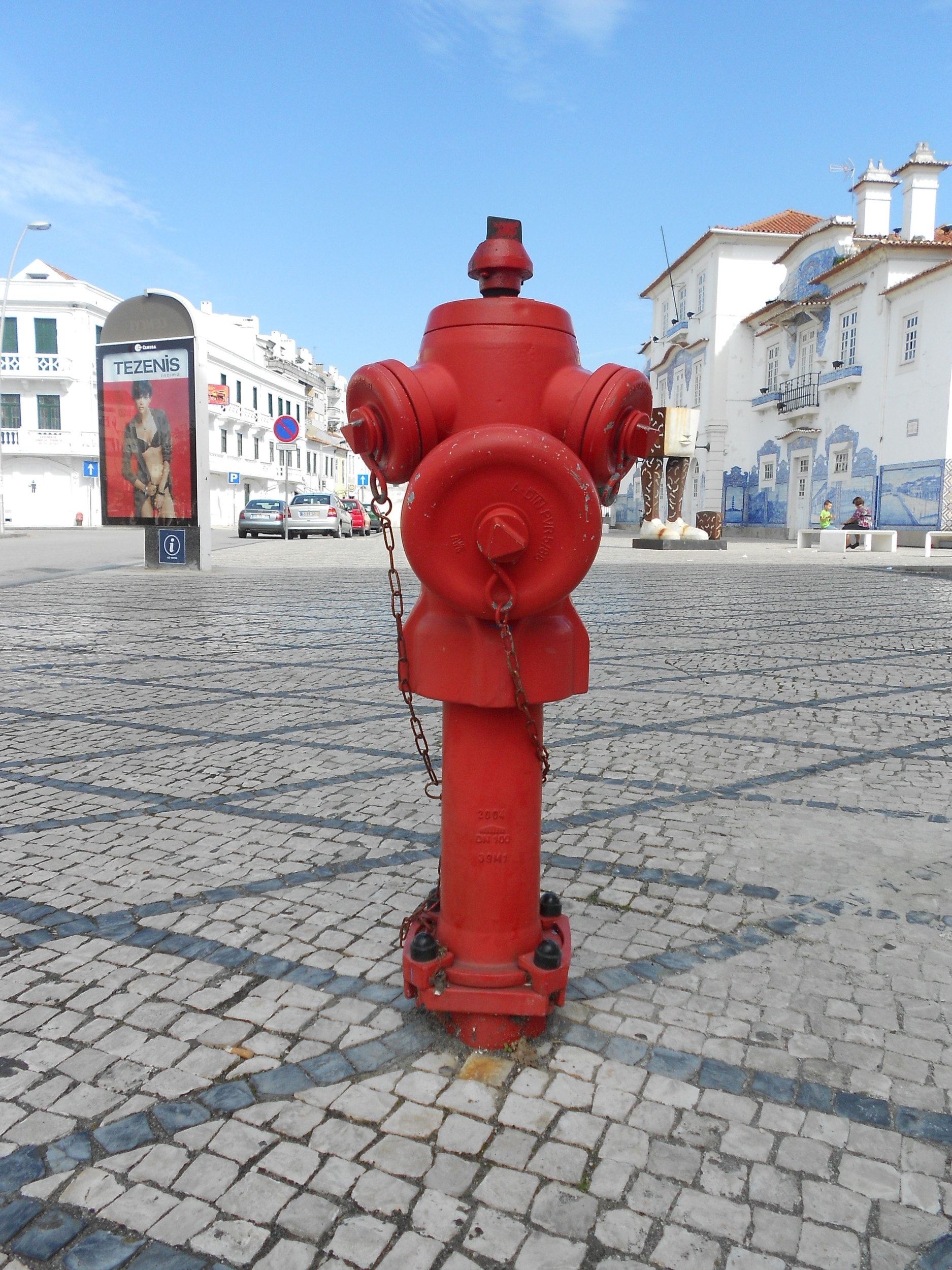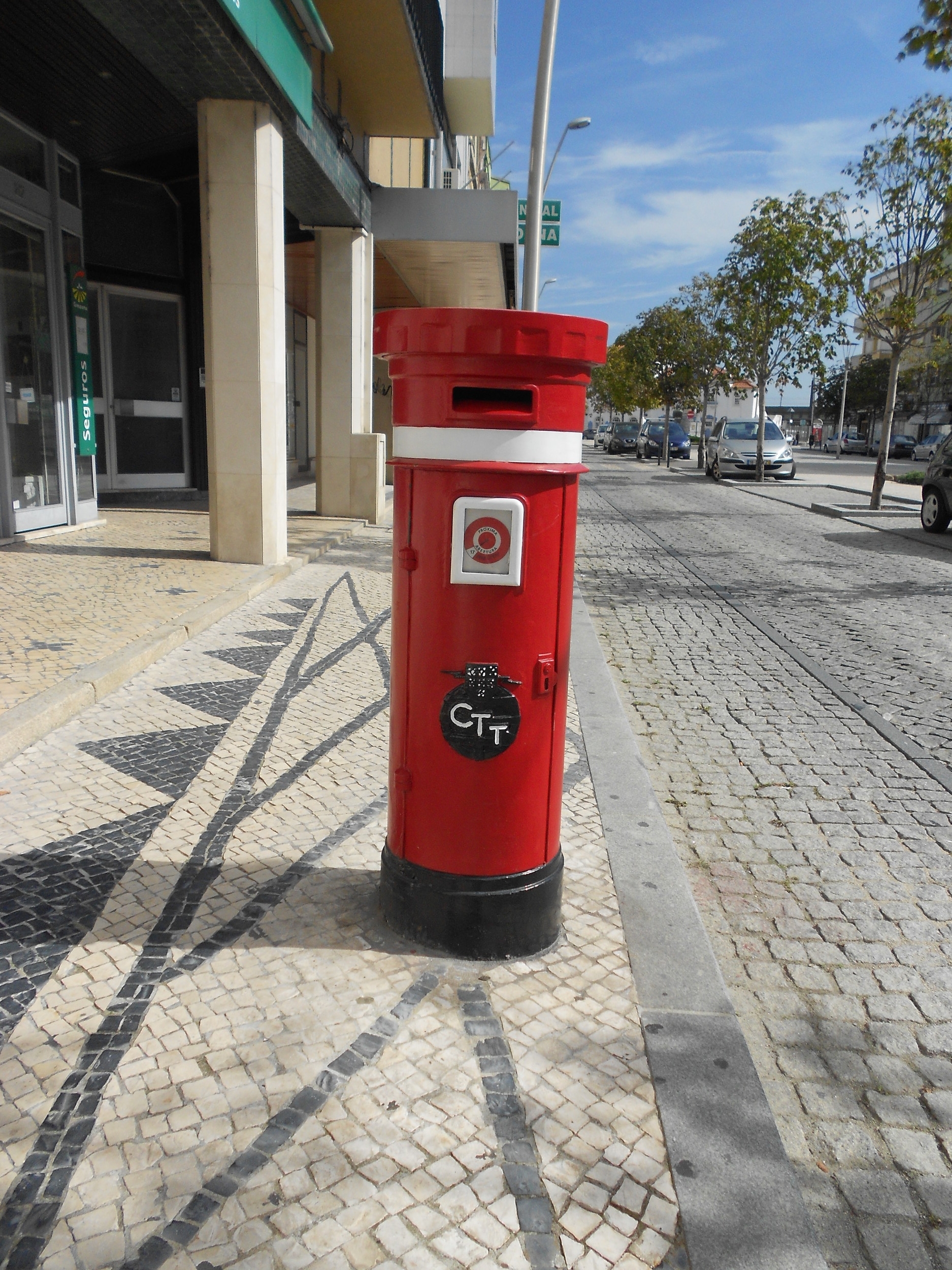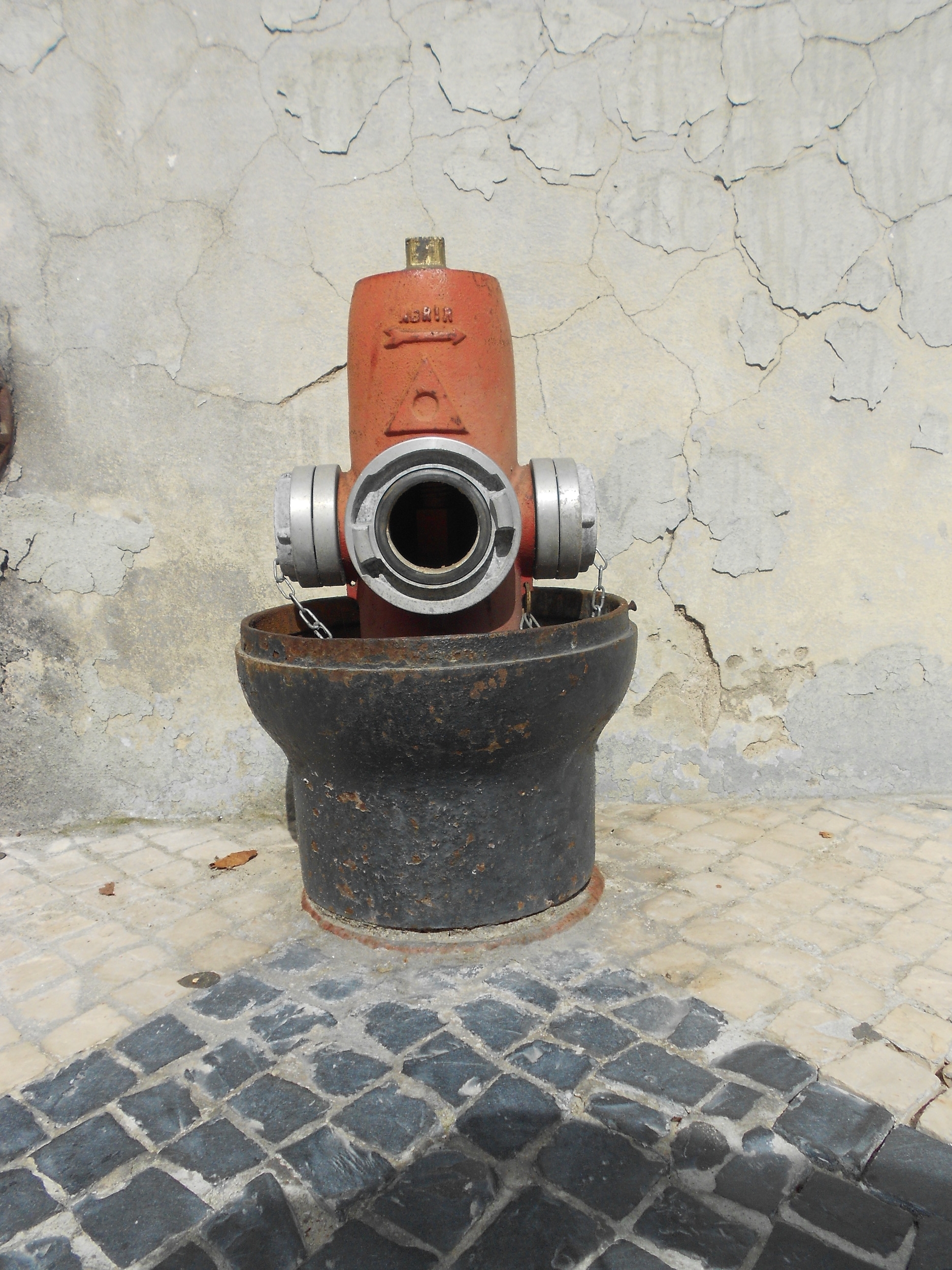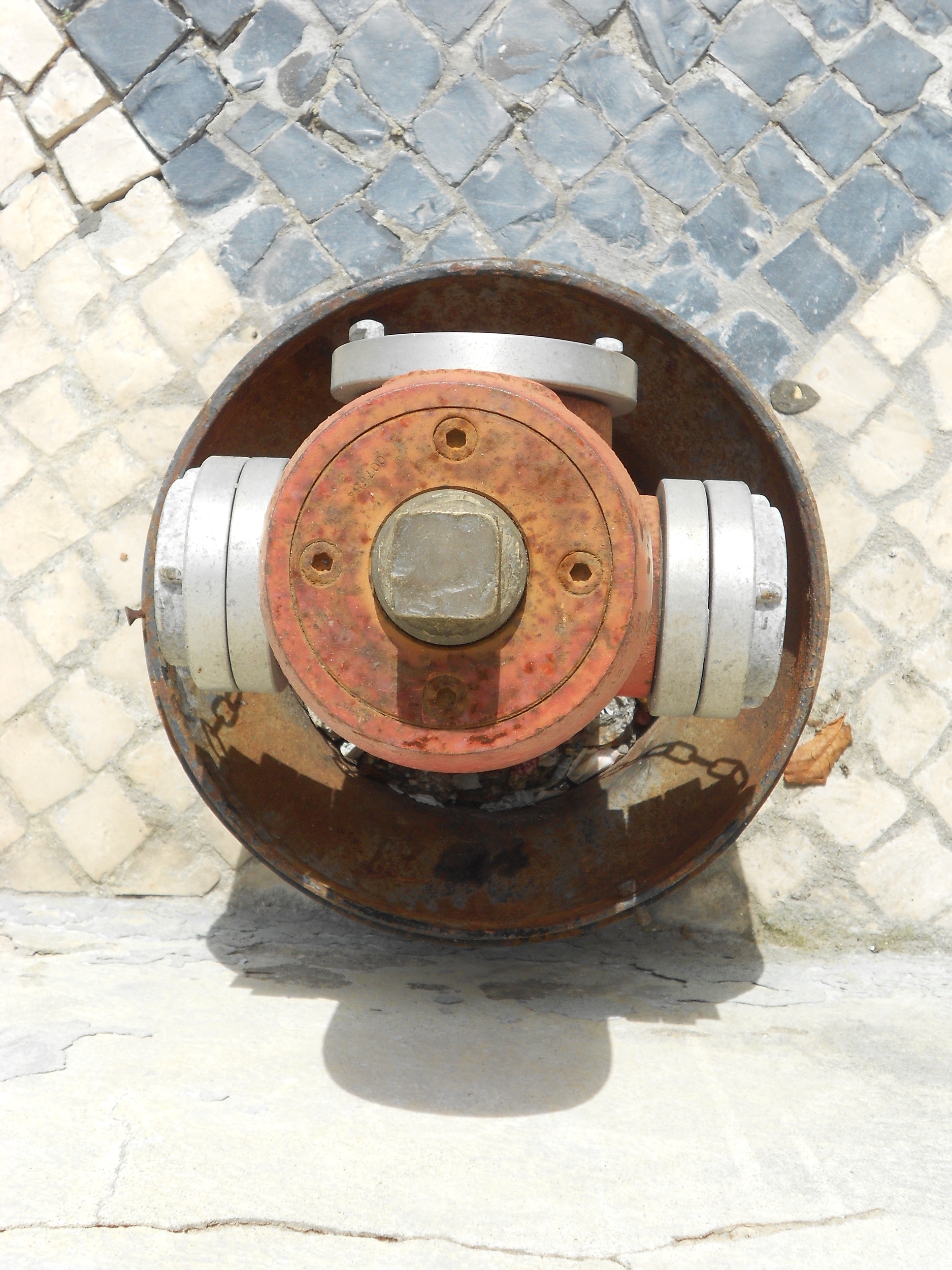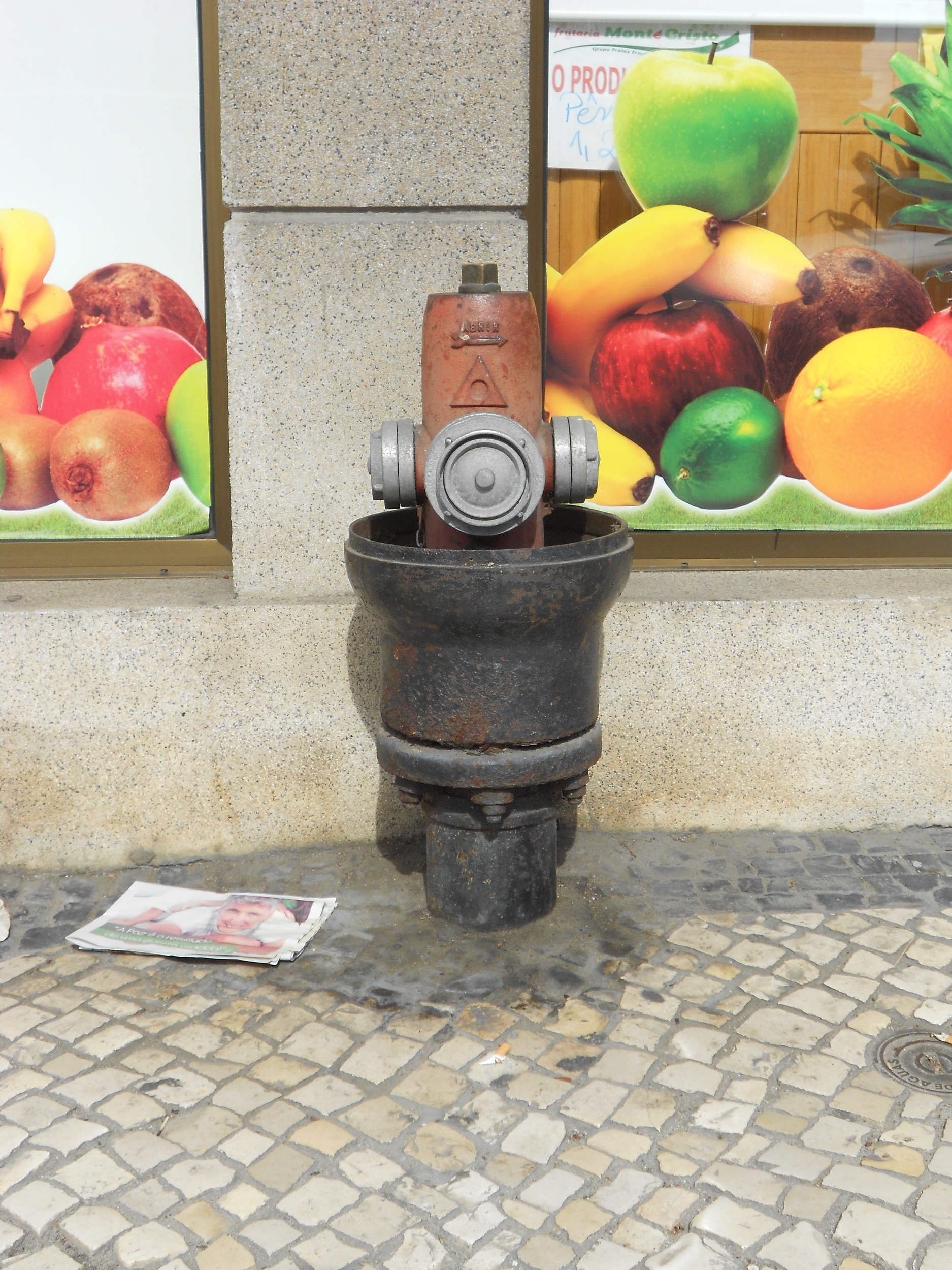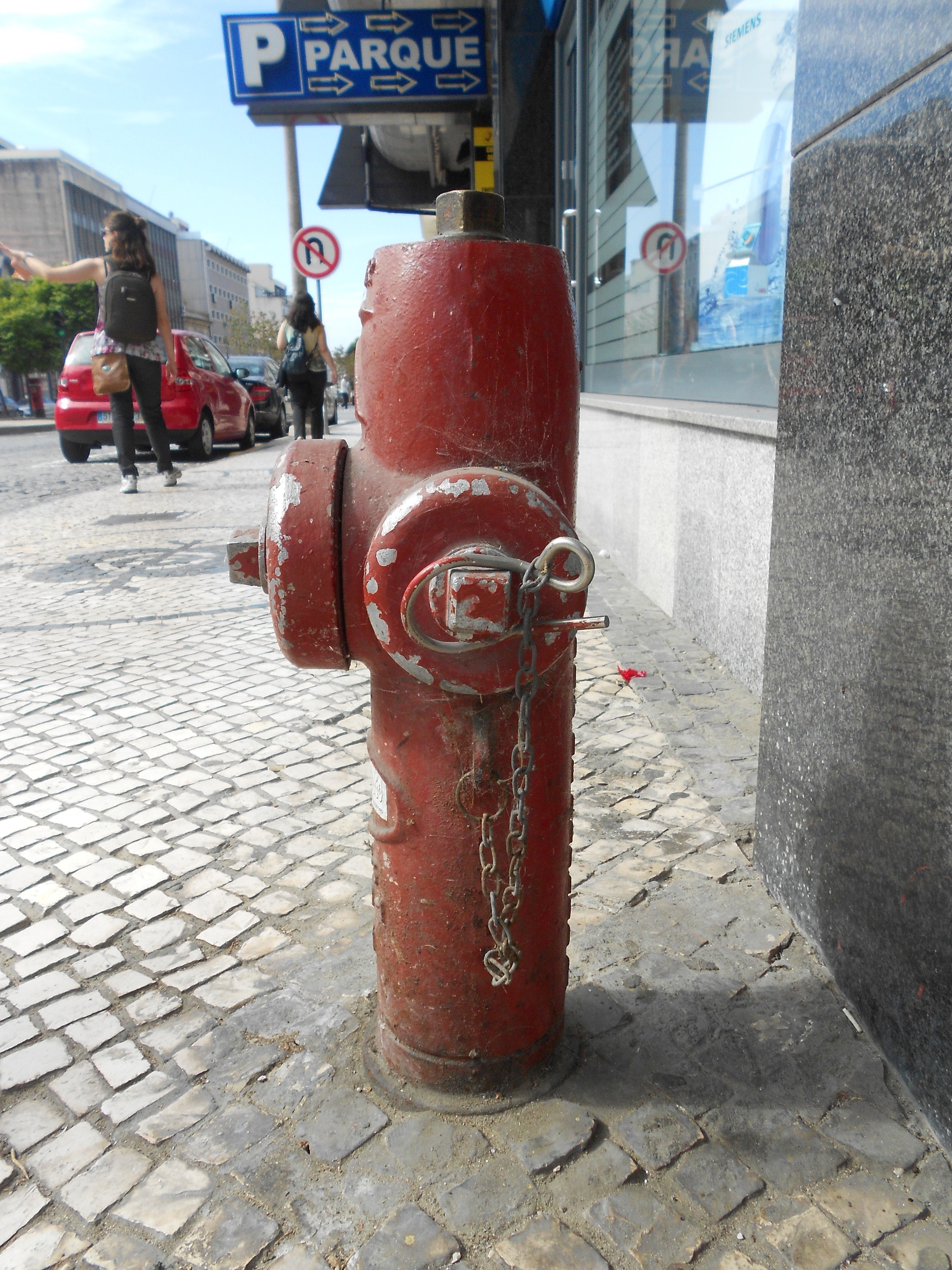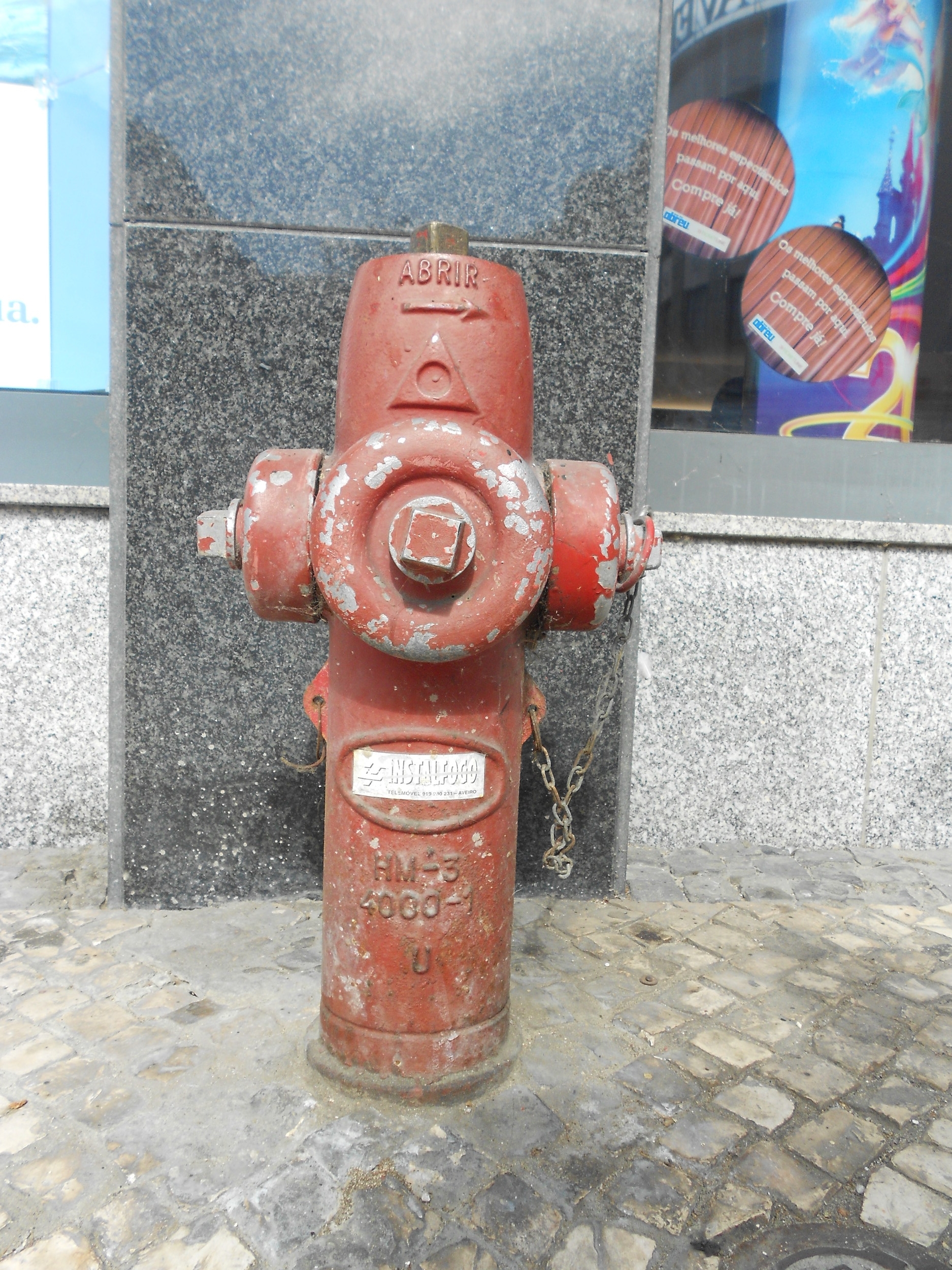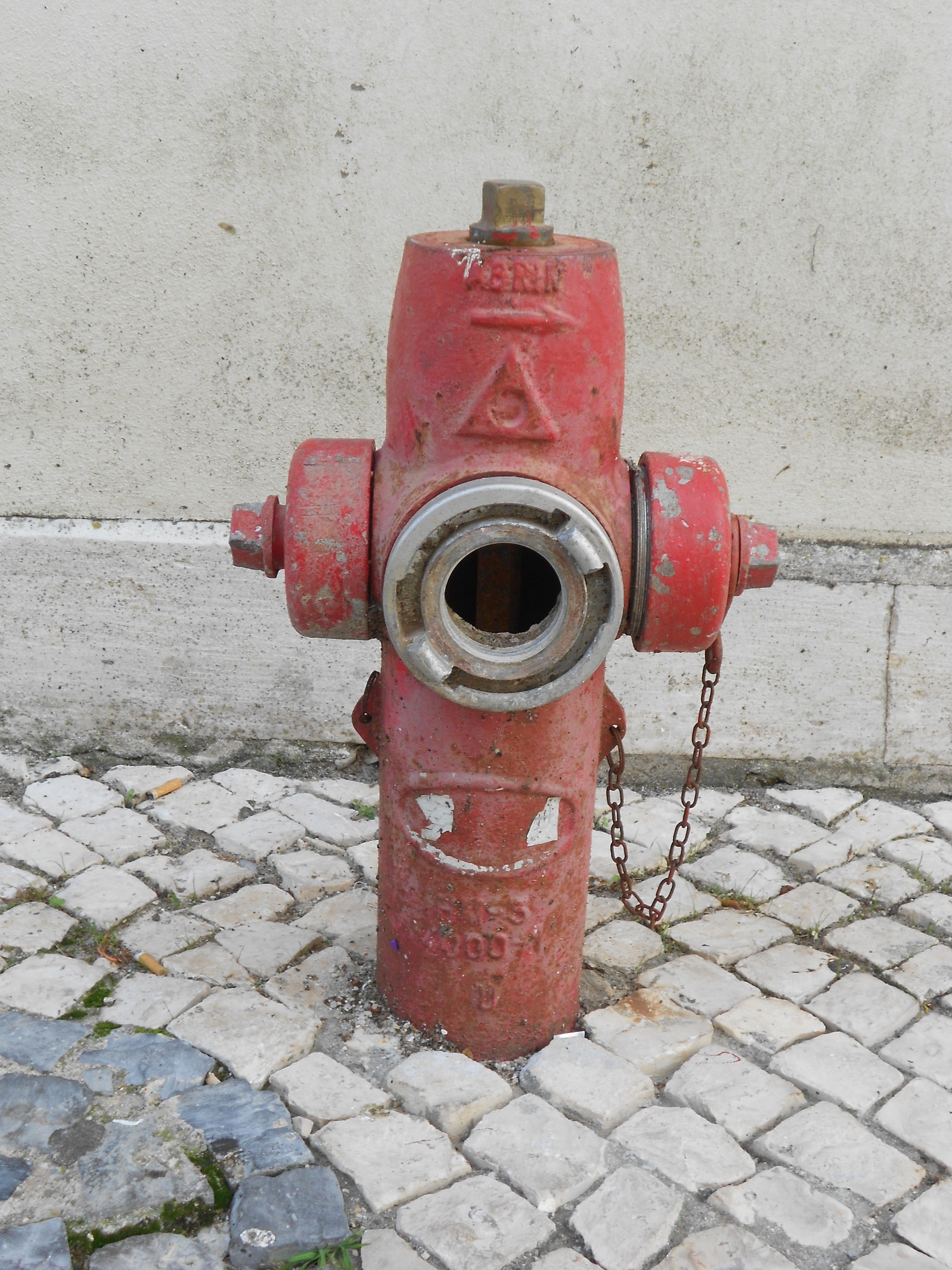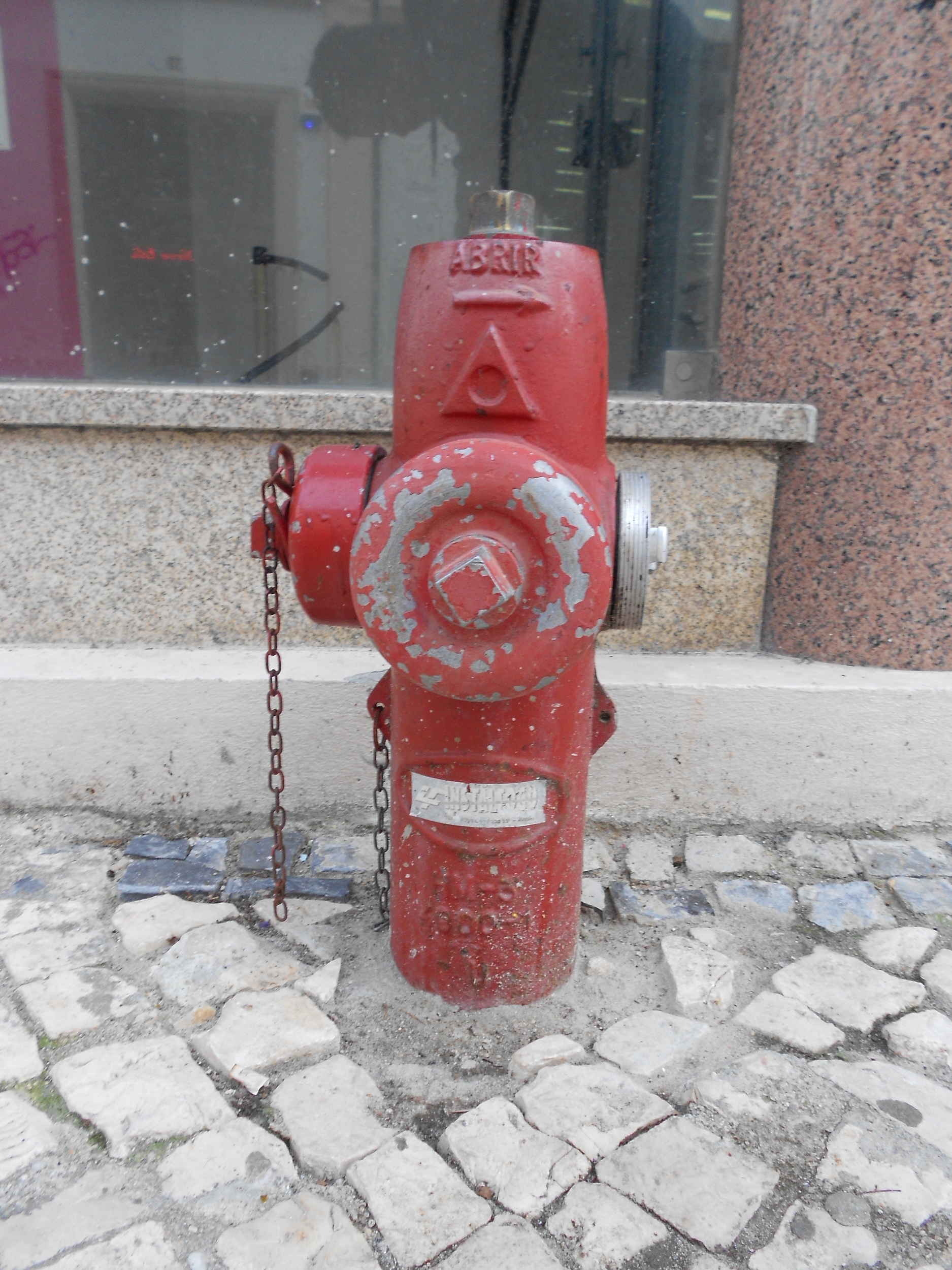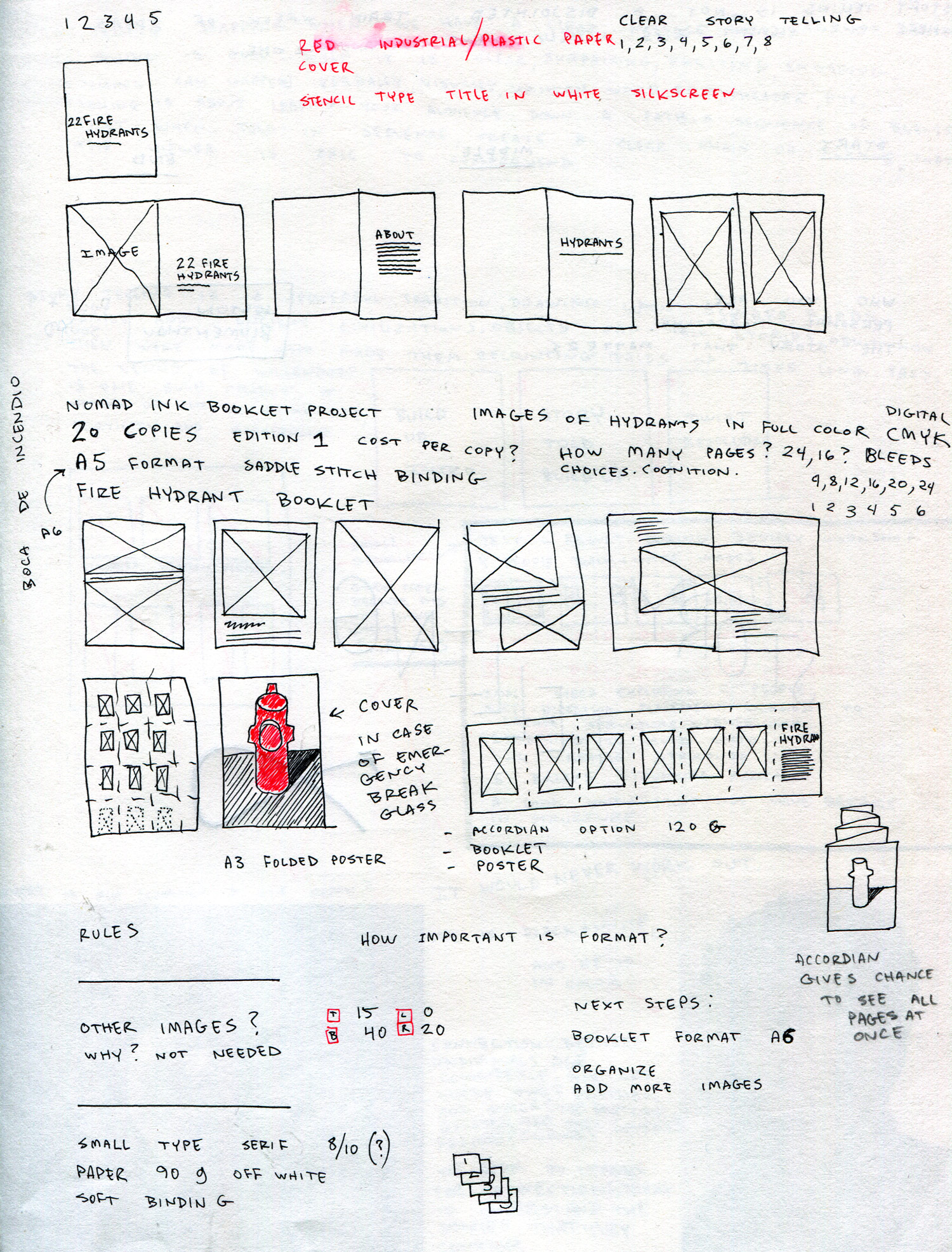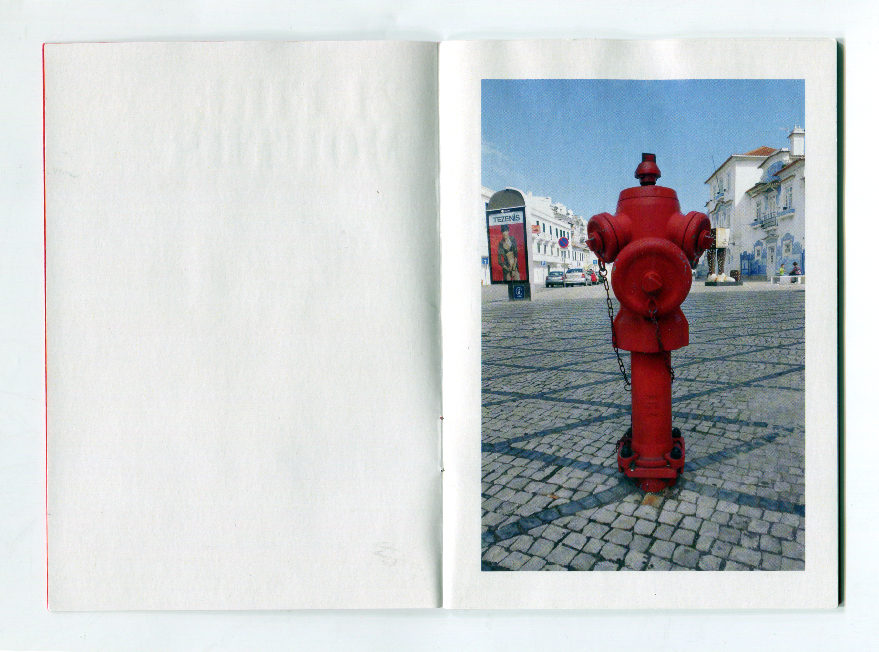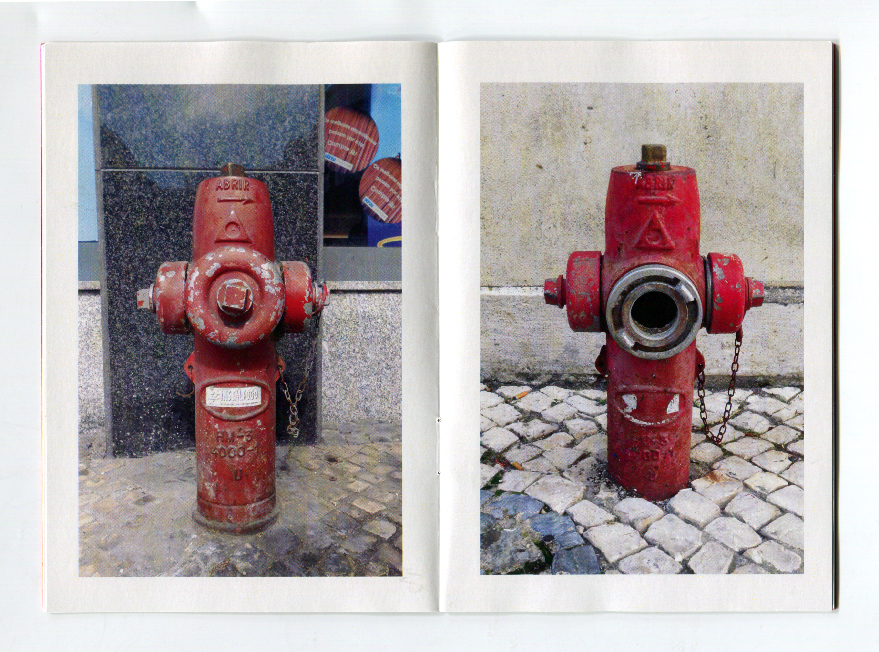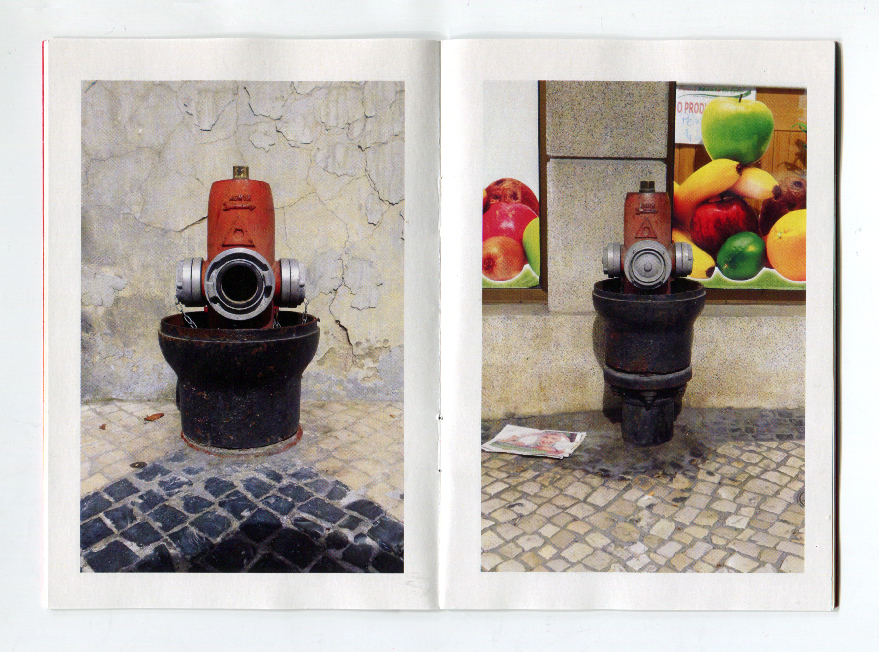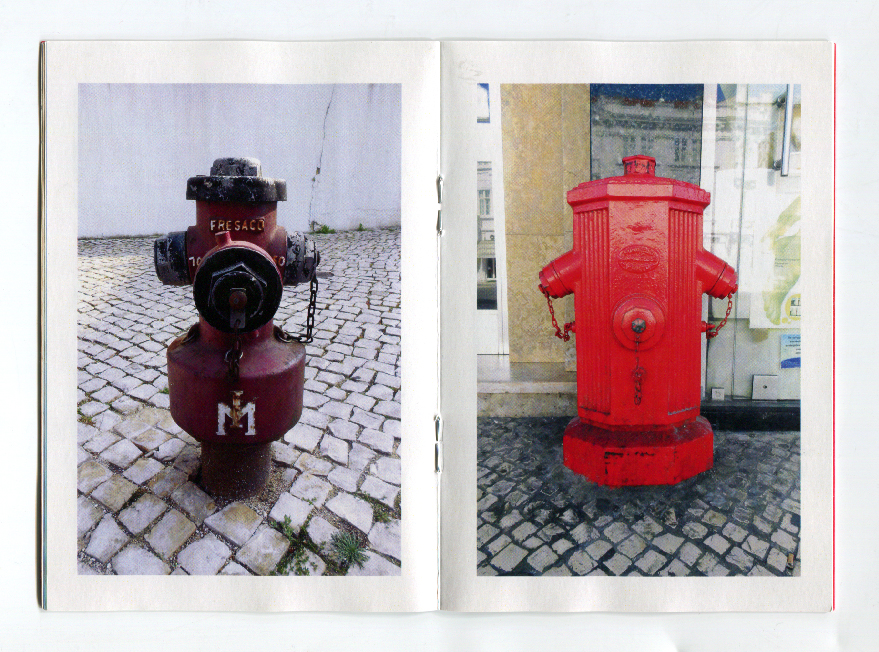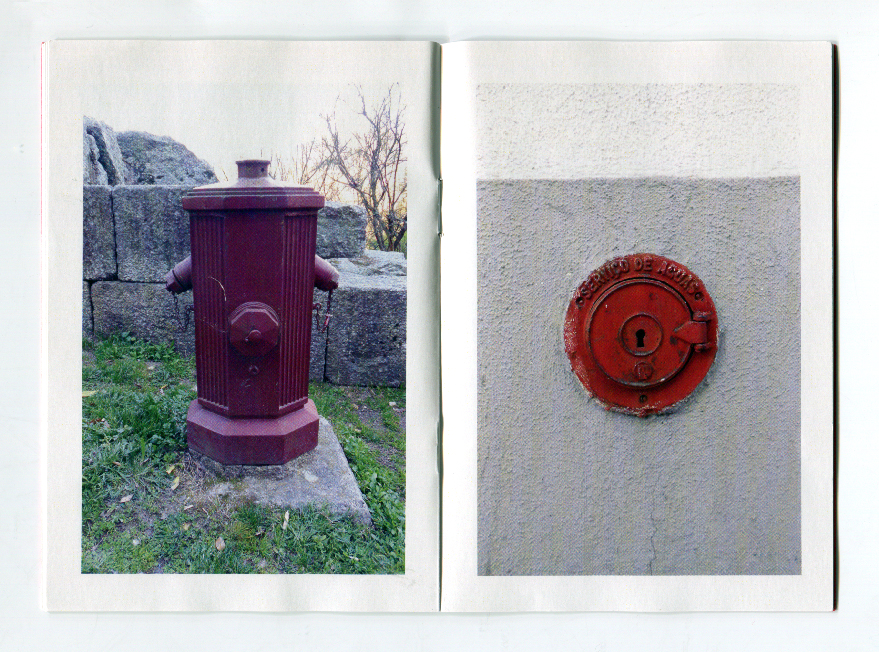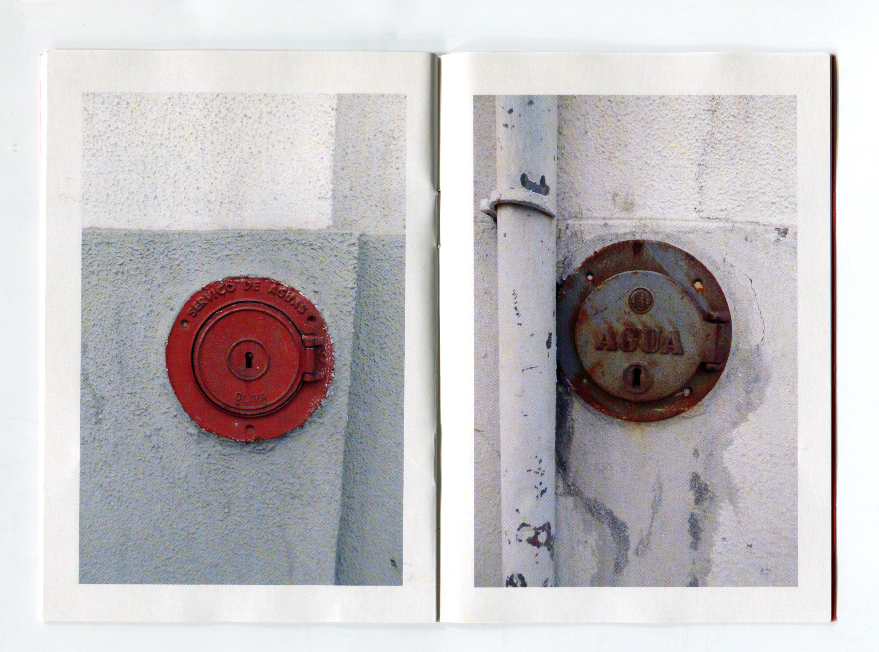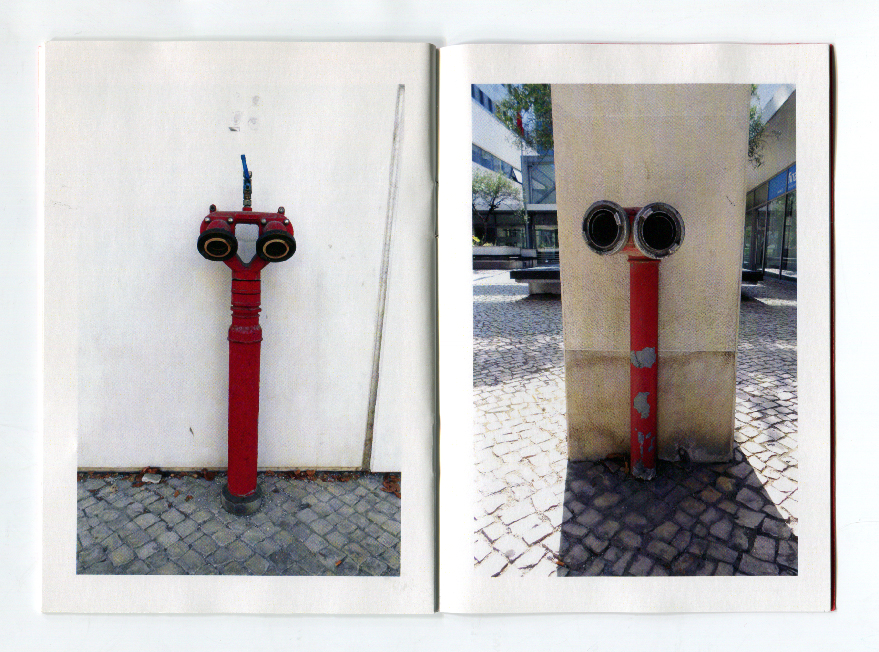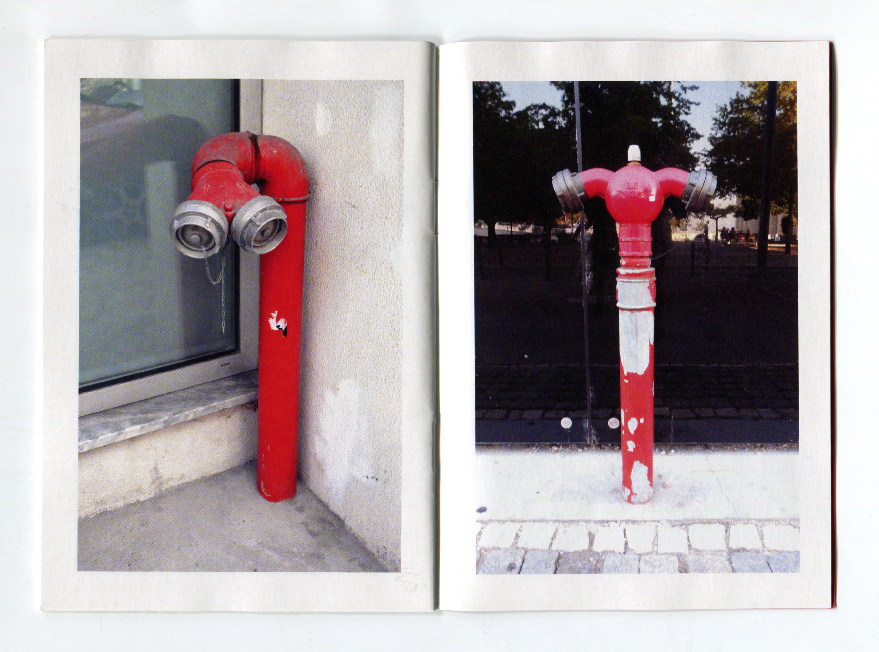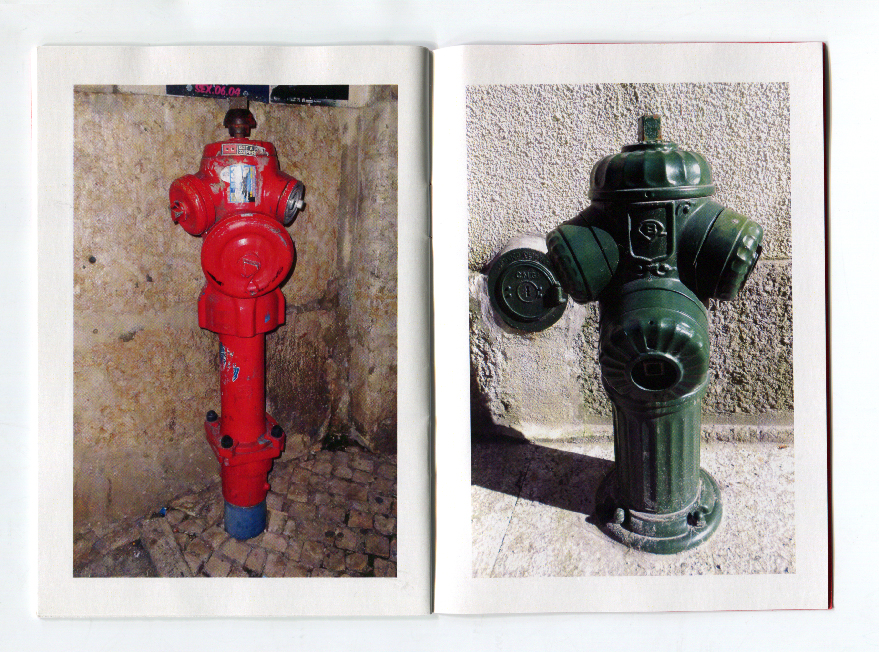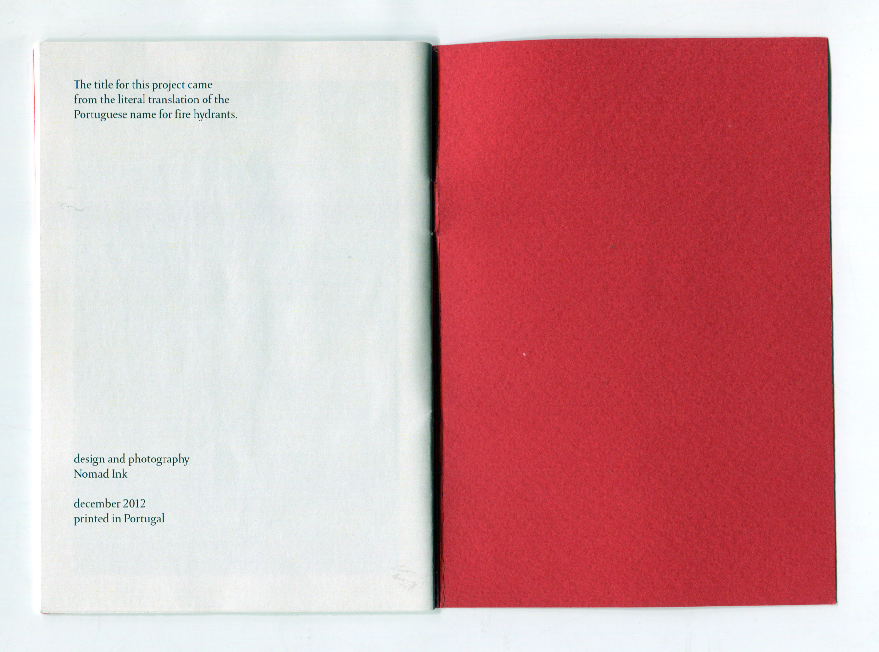Fire Mouths
The title is a translation of the Portuguese name for fire hydrants, "Boca de Incêndio." The hydrants appear on almost every corner of Porto (Northern Portugal), and in a city that's over 2300 years old, multiple systems are in place.
Several kinds of hydrants and public utility objects were researched. The actual content was not so important to my investigation, rather the hydrants serve as a 'subject' that allowed me to apply the images to a system. I was not interested in the location, or when the photos were taken. It would have taken extensive research to find out when the hydrants were built and installed. When organizing the collection of images, I instead chose to focus on categories, essentially how the hydrants looked, and what relationships I could form by placing them in sequence. I arranged all the single red hydrants first, then the ones with protective cases, followed by older ones, and then with hydrants that did not fit the template, i.e. the hydrants that were circles or had double access valves. By using LATCH, it's possible to organize data sets into compelling visual storytelling.
The images above represent a partial selection of hydrants that were photographed during the initial stages of data collection. The thumbnails below show the process of choosing image placement and layout options.
The finished booklet, shown below, shows those images placed in a deliberate sequence. There is no deeper meaning in the arrangement of these images, however by placing rules on the content the project deals with sequence and consistency.
The A6 booklet was produced with 4 color digital printing, has 24 pages and is finished with saddle stitched binding.
Date completed: 2014
Client: Self
Location: Porto, Portugal
Printing & Binding: Norcopias
Copies: 1

